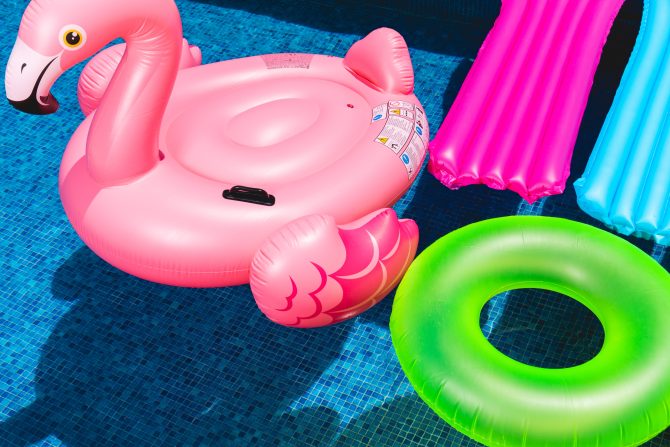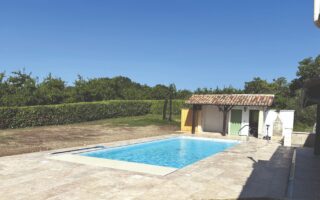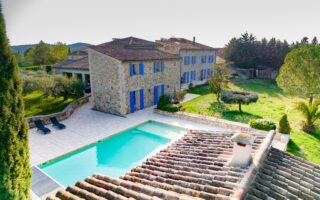Swimming Pool Heating Systems
Advice

Solar heating
Heat your pool with one of the most reliable solar heating systems available for your pool.
How does solar heating work?
How much room is needed ?
All pools circulate water through a filtration unit, normally six to 12 hours each day, depending on pool usage. If this circulating water is diverted to pass through some UV tubes lying exposed to the sun, then warmer water is returned to the pool. The more tubes and the greater the flow of water, the warmer the pool will become – simple!
To be effective, a normal collector area needs to be approximately 50% of the pool area and this will produce an output of some 3kWh per sqm per day during the swimming season.
Larger collector areas will be required for shaded/indoor pools and to achieve the higher pool temperatures, the use of floating solar or insulating covers is strongly recommend – particularly at night.
Many people find that a mat laid close to the pool is a very cost-effective solution. A flat roof mounting frame can be used to site a tube collector adjacent to a pool, particularly where space is at a premium. Others prefer to install a remotely sited system out of sight on a convenient rooftop. Wherever the system is sited, it will not be blown away or ripped apart – even in the most severe winter gales.
Solar heating is becoming one of the most popular “add ons” for swimming pools in France at the moment. It stands to reason that with the amount of sun we enjoy, solar panels fitted to a pool will not only provide a free source of heat for your pool it will also allow you to use the pool when others have closed them down for the season.
Furthermore, if you wish to install a combined system to provide domestic hot water, it is just a case of having enough panels and associated equipment. Once installed, you benefit from the constant savings the system provides.
Used in conjunction with a summer pool cover to limit heat loss overnight, it is possible to see an increase of 10 – 20 degrees centigrade in water temperature, depending on the intensity of the sunlight.
Heat your swimming pool with solar energy!
Evacuated tube solar panels increase the water temperature of a swimming pool by an average of 10°C. This is your guarantee for more fun and a longer-lasting season. Navitron solar panels are founded on a simple principle that almost never fails. When there is sufficient sunlight, the water of the swimming pool is pumped through the manifold in the collectors and returns heated to the pool via a heat exchanger.
The collectors have an uncomplicated construction and are available in various sizes. The system is fully modular, so further panels can be added at a later date if required. Solar collectors are perfectly easy – a conscious choice, a wise decision, financially and ecologically sound.
• Solar collectors supply free energy
• During the swimming season, there is enough solar energy available
• The investment repays itself in the short term by saving on energy costs
• The swimming pool can be used more often because the season lasts much longer
• The swimming pool becomes more attractive by virtue of the higher water temperature (10°C on average)
• A durable, clean and environmentally safe source of energy
Evacuated tube panels = tomorrow’s technology today
– Aesthetically pleasing design
– Works all year round with UV radiation
– Frost resistant
– Heat resistant
– Resistant to chemicals
– Long life span (10-15 years)
– Easy to install
– Only 1.8ltrs of water in an average panel
– Ultra high heat efficiency
Installation
Composition of the collectors
Unlike cheaper panels, this system does not heat the water directly within the vacuum tubes. Instead, a sealed copper ‘heat pipe’ transfers the heat via convection of its internal heat transfer fluid to a ‘hot bulb’ that indirectly heats a copper manifold within the header.
The heat pipes are inserted into curved absorbers forming an assembly which in inserted into the glass tubes. The tubes are made of borosilicate glass, which is strong and has a high transmittance for solar irradiation.
In order to reduce the convection heat lost, the glass tubes are evacuated to vacuum pressure or less than 10-3 Pa. Stable vacuum seals are ensured by using a patented technique employing high heat and pressure. In order to keep the stability of the vacuum for a long time, a barium “getter” is used (the silver coating at the tip of the tube). This rare metal coating absorbs any gases that might eventually enter the tube, increasing the lifespan of the vacuum seal.
Through evacuating air out of the glass tube the absorber material and selective coating are protected from corrosion and other environmental influences. This ensures a lifetime of at least 15 years without loss of efficiency. The getter also acts as an indicator and will turn white instantly should the tube be broken.
Different installation procedures
The ideal position is at an angle of 30° in relation to the horizontal and pointed south. The panels can also be mounted on an angled frame on the floor or on a flat roof.
A possible installation
Navitron solar collectors can easily be connected to an existing installation. The regulator measures the temperature at the outlet of the collector and compares the obtained value with the pool water temperature. As soon as the temperature of the collector exceeds the water temperature of the swimming pool by a few degrees (adjustable), the system is activated. A small domestic circulating pump is installed on a pressurised circuit and sends water through a heat exchanger. The water flows to the swimming pool, heated. A typical solar heating system for a 10 x 5 pool will cost around 4000 euros installed.
Heat pumps
How do heat pumps work?
Heat pumps work in a similar way to fridges, only backwards. Instead of taking warm air out of the fridge and dumping it through a series of small tubes and a grill on the rear of the fridge, a heat pump takes whatever temperature is found in the outside air and converts it to heat water through a series of small tubes within the pump body.
Even though the temperature outside may be as little as 5 degree’s the heat pump will just keep adding this to the water going through it until the desired water temperature is achieved.
Do they use a lot of power?
No, an hourly running cost of around 0.25 centimes an hour compared to 1 euro an hour for an electric pool heating system makes them a very cost effective option for pool heating. Once heat is added to any pool, floating solar or insulating covers are strongly recommend to maintain the best temperatures – particularly at night.
Heat Perfector pumps are simple to install, guaranteed for five years and simple to operate – there are no complicated controls and they have a titanium heat exchanger so they are suitable for chlorine and salt pools alike. They also have features that do not come as standard on many other makes of heat pump, such as a frost stat or built in bypass valve.
Share to: Facebook Twitter LinkedIn Email
More in heating, investment, people, summer, swimming pools, work
Leave a reply
Your email address will not be published. Required fields are marked *




REPLY